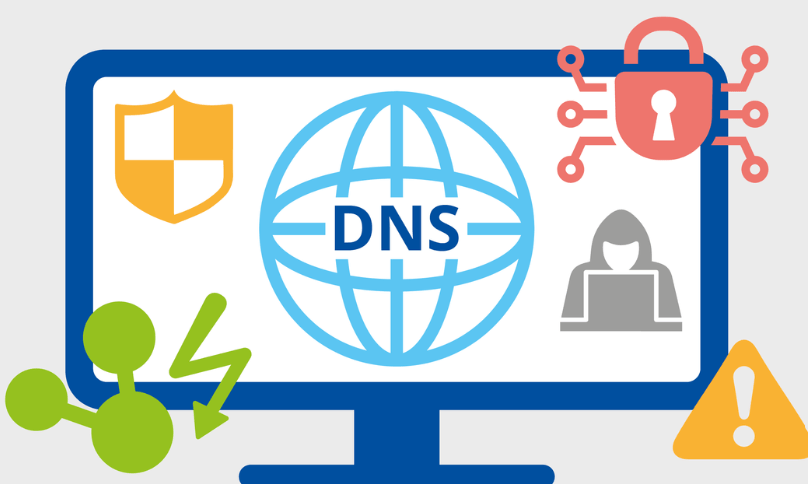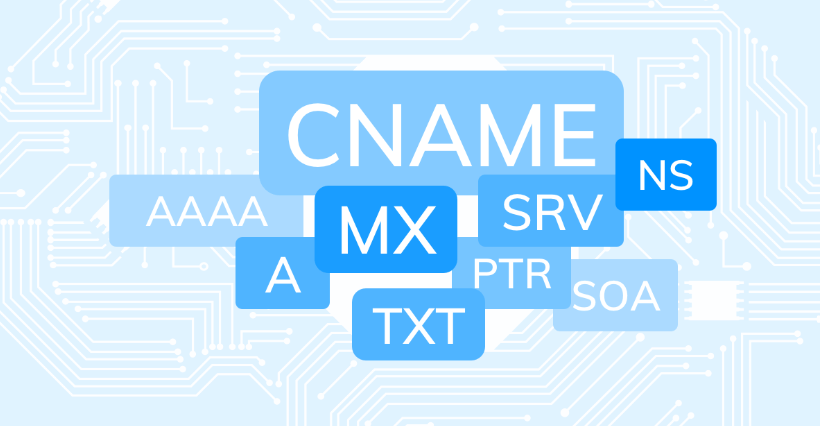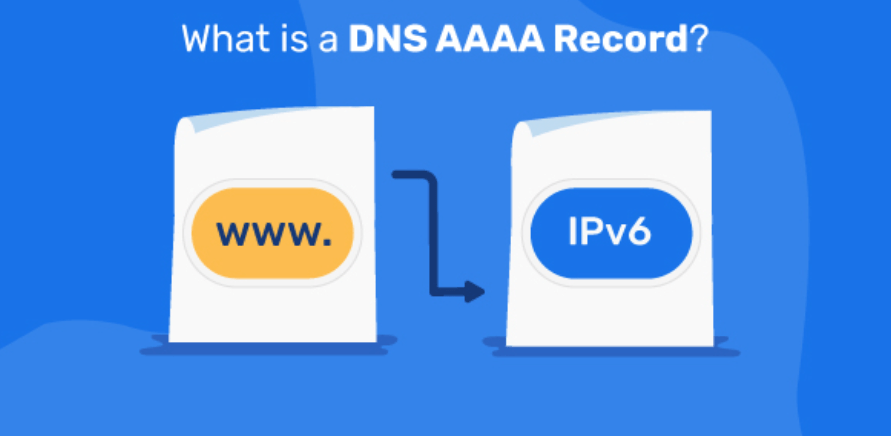In the immense world wide web, knowing about Domain Name System or DNS is imperative to the person surfing or hopping sites. To provide context, DNS carries vital functions as the internet’s fundamental structure that maps the human-readable domain names to the comprehensible computer language in IP addresses. This is to state in this specific article of the blog that we will be taking a closer look at some of the most popular DNS records like A record, MX record, AAAA record, and CNAME record and explaining the part they play in the field of the internet.
The Role of DNS in Internet Navigation
DNS serves as the internet’s directory, guiding users seamlessly from the web addresses they enter into their browsers to the appropriate server hosting the desired content. This matchmaking process is powered by translating domain names, which are memorable to humans, into IP addresses, the language of computer networks. In this way, DNS helps internet users let them avoid memorizing and typing long strings of numbers to get their required sites.
Fundamentally, at the core of DNS, it is a distributed database where your request is directed to the nearest geographical server; this makes web browsing faster. This system is hierarchical, consisting of various levels of DNS servers, including root, top-level domain (TLD), and authoritative servers, each playing a pivotal role in resolving a domain name to its corresponding IP address.
When you initiate a domain name request, the query travels through this network. If the resolving server does not have the domain’s IP address in its cache, it will ask other servers in the DNS hierarchy. This query trickles down to the server of authoritative DNS, where the records of the domain in question are located. When found, the IP address is passed back down through the chain to your computer, facilitating your browser’s connection to the server hosting the website you want to visit.
This complex and visible work explains DNS’s importance in ensuring that the Internet is easily navigable and sufficient for the community to manage while applying the Natural Language Processing concept, which is barely comprehensible by most people to computers and their related protocols. Understanding this process enhances appreciation for the complex yet elegantly simple architecture that keeps the digital world spinning.

Decoding the A Record – The Backbone of DNS
At the core of the DNS entries, the A Record is pivotal, acting as the primary bridge that links a domain name to its digital location, an IPv4 address. This crucial piece of the DNS puzzle enables your internet queries to materialize into tangible results, guiding you to the specific website you seek. Every time you enter a domain name into your browser, it’s the A record’s responsibility to direct you to the correct server by translating that name into a numerical IP address. This IP address is the physical address on the internet where the website is hosted.
Without the A record’s functionality, the process of navigating the internet would be akin to trying to find a home in a vast city without knowing its street address. The A record ensures that when you seek a website, your request doesn’t end up lost in the digital ether but arrives precisely where it needs to go. This DNS entry is vital for making the interaction between the client’s computers or smartphones- and the servers where the relevant web pages we want to view are located possible.
The designs are relatively simple in concept, and yet they are quite vital in their intended usage. The essential role can be illustrated by the fact that if A records were suddenly removed, most internet connections that most people have nowadays would not be possible. Without it, the foundation of internet browsing is impossible, and the internet framework aids in the data packets, ensuring they navigate their way through to reach our screen at the simple click of a button to open a website.
Navigating the World of MX Records
MX records, standing for Mail Exchange records, are pivotal for the functionality of email communication across the internet. These DNS entries identify the specific mail servers designated to receive email on behalf of a domain. When an email is sent, the sending server consults the DNS to retrieve the MX records for the recipient’s domain. This process determines the path the email will take to reach its final destination. Unlike A or AAAA records, which direct traffic to servers hosting web content, MX records ensure that emails find their way to the correct mail server, facilitating smooth and efficient email delivery.
Thus, MX records do not just /merely/ refer to an email forwarding system; they include much more than that. A preference value is used to direct the order of mail servers that domain administrators attempt when delivering mail. This functionality is very important for the setup of redundancy while working with emails, and this is because if the main server is not available, then emails are forwarded to the next prioritized server, as displayed in the MX record list. Also, MX records can point to a completely different domain, making them very flexible for such cases as outsourcing email services or managing emails on several servers.
To companies as well as organizations, the correct setup of MX records should become vital. However, it is not limited to the reception of emails; matters such as security and spam have feelings as well. By understanding and getting control of the MX records correctly, administrators can set better forms of email verification which include the SPF and the DKIM. As with any other part of the DNS configuration, this aspect can be described in detail; nevertheless, the efficiency of e-mail services in the GN environment is significant.
Understanding AAAA Records for IPv6
AAAA records, pivotal in DNS entries, are the foundation for integrating the IPv6 protocol into our internet infrastructure. With the increase in the utilization of the virtual atmosphere and the availability of IPv4 addresses becoming scarce, AAAA records have become fundamental tools for opening the new generation of IPv6 addresses. These records work by providing a corresponding relationship of a domain name to an IPv6, the next generation of IP source that has the potential of greatly increasing the number of IP addresses for Web devices. This transition is not only to support more devices but also in terms of security and efficiency in communication over the internet.
AAAA record explains how organizations can make their websites and online services accessible in a network that adopts both the old and new versions of IP protocols. This is even important as the IPv6 internet grows rapidly due to the larger address space for the internet, among other benefits such as efficient routing and new security features. For businesses looking to maintain a competitive edge and for developers aiming to build forward-compatible applications, familiarity with AAAA records is indispensable.
Additionally, the need for correct records like the AAAA records rises as people turn to use IPv6 and therefore it becomes central to provide the best in that case. This DNS entry allows the servers to interchange data over the IPv6 networks and at the same time gives end users a better experience in acquiring web resources. AAAA records hence trigger the move towards a stronger internet base, at the same time providing a fluid shift into the ever-expanding domain of Internet user interface.
The Versatility of CNAME Records
CNAME records are quite important in domain management since domain owners are often in a position to forward several domains to one IP address. These records work based on mapping an actual domain with an alias, which in turn makes it easy to handle web traffic and the structure of the site.
For instance, a business can use CNAME records to ensure that both www.example.com and support.example.com lead visitors to the same server without needing separate A or AAAA records for each subdomain. This capability is especially useful for organizations that maintain a cohesive online identity across various service platforms. Additionally, CNAME records can be employed in content delivery networks (CDNs) to facilitate the efficient distribution of content by allowing a network of servers to serve the same domain. It also leads to enhanced accessibility of the Web and has a relative impact on the users’ satisfaction caused by the better loading of the content.
By the usage of several universal CNAME records, it is possible to configure the best domain redirections and domain aliases aimed at brand recognition and facilitate work with domains in the network. But it is crucial to note that control of CNAME records is rather limited and the DNS standards do not allow adding CNAME records at the root domain level. Therefore, the management of domains can be considered to need better planning and realization than generic frameworks.
Practical Applications and Best Practices
For website owners and IT professionals, effectively managing DNS records is paramount to a smooth online operation. Mastering the nuances of A, MX, AAAA, and CNAME records ensures your digital presence is robust and safeguards against common internet vulnerabilities. Key to this is a vigilant approach to DNS configuration; errors can lead to downtime, misrouted traffic, or security breaches.
Adopting a regimen of frequent reviews and updates to DNS settings helps mitigate these risks. Furthermore, incorporating security protocols like DNSSEC (Domain Name System Security Extensions) fortifies your DNS against spoofing and cache poisoning attacks, reinforcing your online defenses. Choosing a reliable and fast DNS provider can also enhance your site’s performance noticeably – or, rather, it will influence the site’s users’ experience and, therefore, its ranking.
Last but not least; understanding the correlation between different DNS records will help in tweaking your network in a better manner and your mail deliverability, web browsing, and site reliability will also get boosted. Should the above-mentioned best practices be implemented then an organization would be able to understand the process of DNS management and guarantee an organization has the best DNS management system.


